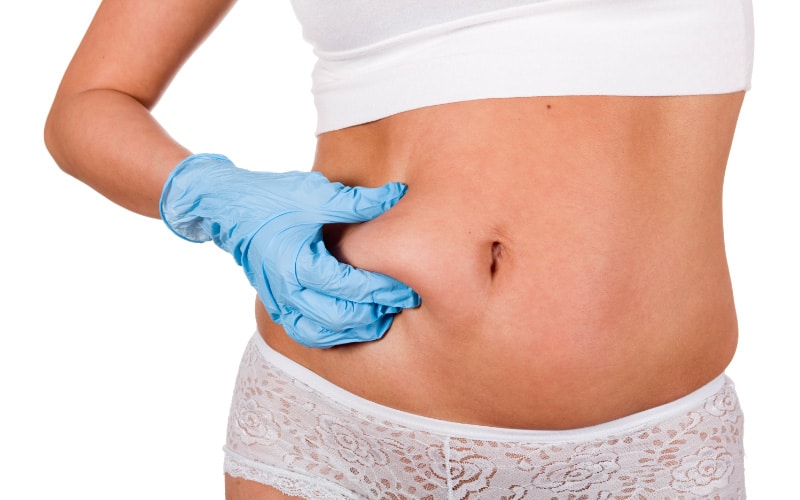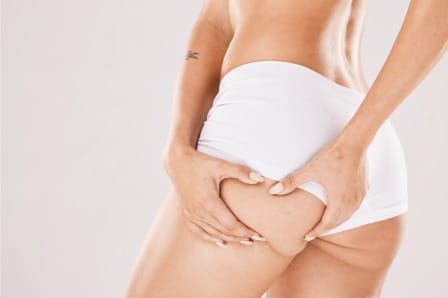
According to The American Society For Plastic Surgeons, liposuction is a type of body contouring and is one of the most popular cosmetic surgeries, with more than 17 million cosmetic procedures being done annually. Before you consider liposuction, you should know the most important things about the procedure highlighted below.
#1: WHAT IS LIPOSUCTION SURGERY
Liposuction or liposculpture is a plastic surgery body contouring procedure that removes fat under the skin in body parts that resist proper diet and exercise. It isn’t a way to lose weight; instead, liposuction is an effective way to remove fat and to take out the fat that isn’t eliminated through the typical methods, such as reducing carbohydrate intake and running daily.
#2: WHERE IS LIPOSUCTION Procedure PERFORMED
Some of the areas most popular for liposuction are:
- Back of the neck
- Under the chin
- Women’s breasts
- Abdomen and love handles
- Men’s breasts for Gynecomastia
- Bottom of the upper arms
- Outside of the thighs
- Area around the bra strap
- Buttocks
Other less common areas are the upper back, inner thigh, and ankles. The part of the body to treat depends on your goals, diet, and genetics; some people collect the fat deposits in certain areas more than others. Your plastic surgeon will review your medical history and recommend the best options.
#3: WHO AN IDEAL CANDIDATE IS FOR LIPOSUCTION SURGERY
The ideal liposuction candidate is healthy, near their goal weight, and doesn’t smoke. The ideal patient has fat under the skin, which means the fat lies between the skin and muscle (subcutaneous). Visceral fat is the tissue that surrounds the abdominal organs under the muscle. If you have a lot of visceral fat, you’ll need to lose weight before having liposuction.
Also, your surgeon will check how elastic your skin is before proceeding with liposuction. A patient who has good skin elasticity is a good candidate; if you have cellulite or loose skin, you could have uneven or dimpled liposuction results.
#4: LIPOSUCTION ISN’T FOR LOSING WEIGHT
Some people still believe this is a way to lose weight. Instead, it’s a way for a person at a healthy weight to reduce fat. How much fat the surgeon can take out depends on several factors, including the surgeon’s opinion of your health and goals.
#5: HOW TO GET READY FOR LIPOSUCTION SURGERY
Your plastic surgeon will give you instructions before you have surgery. Generally, you’ll need a family member or friend who can drive you to and from the medical facility and help you with care after surgery.
Some drugs, such as blood thinners, and aspirin, often need to be stopped before liposuction because they can cause bleeding problems.
Your surgeon may do bloodwork before the surgery to check that you’re not allergic to anesthetics.
On the big day, you’ll need to go without food or beverages for about 12 hours before liposuction.
#6: HOW THE PROCEDURE IS DONE
Liposuction involves making tiny skin incisions and sticking a cannula into the fatty tissue. Then, the excess fat is sucked out, and the incisions are sewn together.
Most liposuction surgeries are done on an outpatient basis. While you’ll probably have general anesthesia, you usually can go home the same day if someone drives you. There are several types of various liposuction techniques like smart lipo, ultrasound assisted liposuction, power assisted liposuction, tumescent liposuction, laser assisted liposuction and 360 liposuction procedure.
#7: RECOVERY
Liposuction recovery patients can go back to work in two or three days. It takes between a few days and up to four weeks to return to all regular activities, including exercise.
Much depends on you and how your body handles tumescent liposuction; some patients can go back to regular exercise in less than a week, while others need several weeks. It also depends on the location where the fat was removed.
Post-liposuction effects often include swelling and fluid retention, bruising, and tenderness where the fat was removed. You’ll probably wear a compression garment for several weeks to ensure your skin molds to your new contours. It’s important to always wear it for optimal results.
#8: SCARRING
A cannula is a thin tube no more than the width of a pencil and often smaller, so the liposuction scars are tiny. How many scars you have depends on where you have liposuction. Also, scarring depends on your age and skin elasticity. Some patients have almost no scarring, while others have more obvious ones.
Just remember that everyone will have some amount of scarring. The only way to not have them is to not do tumescent liposuction.
#9: RESULTS TO EXPECT
It’s essential to have reasonable expectations of your liposuction results. After the fat removal surgery, you’ll notice some bruising and swelling, and you could even see some loose skin. So, it can take a few weeks to several months before you see the final results.
#10: WHETHER THE RESULTS ARE PERMANENT
Once your surgeon takes out fat cells, it’s gone forever. But don’t take this to mean you can’t gain weight anymore. You can still add pounds in adjacent tissue and other areas of your body that weren’t treated. So, it’s vital to maintain a healthy diet and get plenty of weekly exercise. That way, you can ensure that you’ll have great, long-term results.
Q And A: What to know before getting liposuction
 HOW MUCH DOES LIPOSUCTION COST?
HOW MUCH DOES LIPOSUCTION COST?
The cost of liposuction can vary depending on several factors, including the location of the treatment, the amount of fat cells being removed, the surgeon’s experience, and the specific technique being used.
In the United States, the average cost of traditional liposuction can reach up to seven thousand dollars per treatment area. However, this cost can be significantly higher if multiple areas are being treated or if the patient requires a more extensive procedure.
It’s important to note that the cost of traditional liposuction typically does not include additional fees such as anesthesia, facility fees, and postoperative care. Patients should also consider the cost of any necessary preoperative tests, as well as the cost of any necessary follow-up appointments.
It’s important to choose a qualified and experienced aesthetic plastic surgery surgeon to perform the procedure, as this can have a significant impact on the final cost of the procedure as well as the quality of the results.
HOW LONG DOES LIPO Procedure LAST?
Liposuction is a surgical procedure that removes unwanted fat from specific areas of the body. The results of liposuction are generally long-lasting, as the fat cells that are removed during the procedure do not regenerate.
However, it’s important to note that liposuction does not prevent new fat cells from forming in the treated area or in other areas of the body. If a patient gains weight after the procedure, new fat cells may form in the treated area or in other areas of the body, which can result in a change in the appearance of the treated area.
To maintain the results of liposuction, patients should adopt a healthy lifestyle that includes regular exercise and a balanced diet. This can help prevent new fat cells from forming in the treated area or in other areas of the body and help maintain the results of the procedure over the long term. Additionally, patients should maintain a stable weight after the procedure, as significant weight gain fat and fluctuations can also affect the results of the procedure over time.
HOW MUCH WEIGHT CAN YOU LOSE WITH LIPOSUCTION Procedure?
Liposuction is not a weight loss procedure and is not recommended as a substitute for diet and exercise. Liposuction is designed to remove localized pockets of fat from specific areas of the body, rather than to help patients lose a significant amount of weight.
The amount of fat that can be removed during liposuction is typically limited to a few pounds or less, depending on the patient’s body mass index (BMI) and the surgeon’s assessment of the patient’s overall health and body composition. In general, liposuction is best suited for patients who are at or near their ideal weight, have good skin elasticity, and have localized pockets of fat that have not responded to diet and exercise.
It’s important to note that liposuction is not a solution for obesity or a substitute for a healthy lifestyle. To achieve significant and sustainable weight loss, patients should adopt a healthy diet and exercise regularly.
LIPOSUCTION SURGERY BEFORE AND AFTER PHOTOS
You can find many before and after photos of liposuction procedures on the on my website. These photos provide a visual representation of the potential results of liposuction and can be helpful for for your decision to have liposuction.
It’s important to keep in mind that individual results may vary and that the specific outcomes of liposuction will depend on several factors, including the patient’s overall health, body composition, and the surgeon’s skill and experience. Patients should consult with a qualified plastic surgeons to discuss their individual needs and goals and to learn more about the potential results of liposuction.
BOOK YOUR DALLAS LIPOSUCTION PROCEDURE TODAY
Once you’re ready to take the next step and book your consultation, there’s no turning back. The results you’ve dreamed of are within your grasp. Stop delaying, and schedule a liposuction appointment with plastic surgeons Dr. Raja Mohan today. Serving Fort Worth, Southlake, Plano, Frisco and many other areas surround the Dallas area.
You won’t regret your cosmetic surgery decision!
REFERENCES
-
- 10 Things To Know About Liposuction. (n.d.). Accessed at https://www.plasticsurgery.org/news/blog/liposuction-10-things-to-know-and-10-questions-to-ask
- Laser assisted Liposuction Overview. (n.d.). Accessed at https://www.plasticsurgery.org/cosmetic-procedures/liposuction